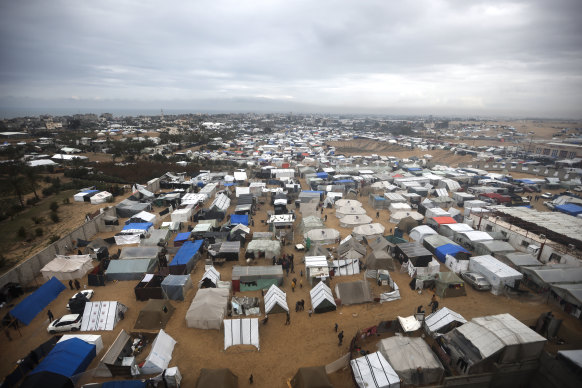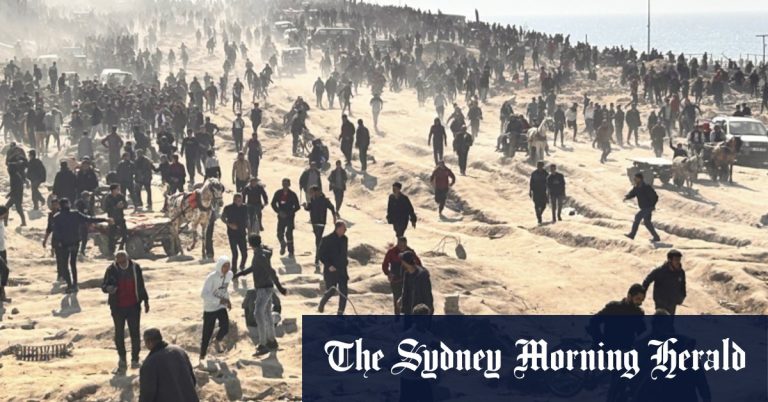Fierce fighting continued in parts of northern Gaza, the first target of the attack, where the destruction was massive. Residents reported days of intense fighting in the Zaytoun neighborhood of Gaza City.
Ayman Abu Awad, a resident of the area, said: “We are surrounded and unable to move due to the violent shelling.”
He said that hungry residents were forced to eat animal fodder and search for food in demolished buildings. Aid to northern Gaza has been largely cut off, and the United Nations World Food Program suspended aid deliveries last week.
Details of the proposed transaction
A senior official from Egypt, which plays with Qatar as a mediator between Israel and Hamas, said that the draft ceasefire agreement includes the release of up to 40 women and a larger hostage in exchange for the release of up to 300 Palestinian prisoners, most of whom are women, minors and the elderly. the people.
download
The official, who spoke on condition of anonymity to discuss negotiations, said a proposed six-week truce to the fighting would include allowing hundreds of trucks to bring much-needed aid into Gaza each day, including to the north. He said that the two sides agreed to continue negotiations during the pause in order to release more prisoners and establish a permanent ceasefire.
Negotiators face an unofficial deadline for the start of the holy month of Ramadan around March 10, a period that often sees Israeli-Palestinian tensions escalate.
Hamas says it did not participate in the latest proposal put forward by the United States, Egypt and Qatar, but the announced broad outlines largely match its previous proposal for the first phase of the truce.
Hamas has said it will not release all remaining hostages until Israel ends its offensive and withdraws its forces from the Strip, and has demanded the release of hundreds of Palestinian prisoners, including top militants – conditions that Netanyahu has rejected.

A temporary camp for Palestinians displaced by the Israeli ground attack on the Gaza Strip, in Rafah.credit: AP
A bitter wait for the families of the hostages
Israel declared war after the October 7 Hamas attack on southern Israel, during which the militants killed about 1,200 people, most of them civilians, and took about 250 hostage. More than 100 hostages were released under a ceasefire agreement in November. More than 130 of them remain in captivity, and a quarter of them are believed to have died.
The families continued the negotiations with hope and pain.
“It looks like Schindler's List. Is he going to be on the list or not?” Shelly Shem Tov, the mother of Omar (21 years old), told Israel Army Radio about the chances of his release.
Israel responded to the October 7 attack with an air and ground offensive that displaced about 80 percent of Gaza's population from their homes, putting hundreds of thousands at risk of famine and the spread of disease. The Ministry of Health in the Hamas-controlled Gaza Strip says that 29,692 Palestinians were killed in the war, two-thirds of whom were women and children.
The death toll announced by the ministry does not differentiate between civilians and combatants. Israel says its forces killed more than ten thousand militants without providing evidence.
Death of newborns in Rafah
The war has devastated the health sector in Gaza. Less than half of hospitals are even partially functioning.
At Emirates Hospital in Rafah, three to four newborns are placed in each of 20 incubators, designed to hold just one baby.
Dr. Amal Ismail said two to three newborns die in one shift, partly because many families live in tents in rainy and cold weather. Before the war, one or two newborns died every month in incubators.
“No matter how much we work with them, it is all in vain,” she said. “The sanitary conditions in the tents are very poor.”
AP

